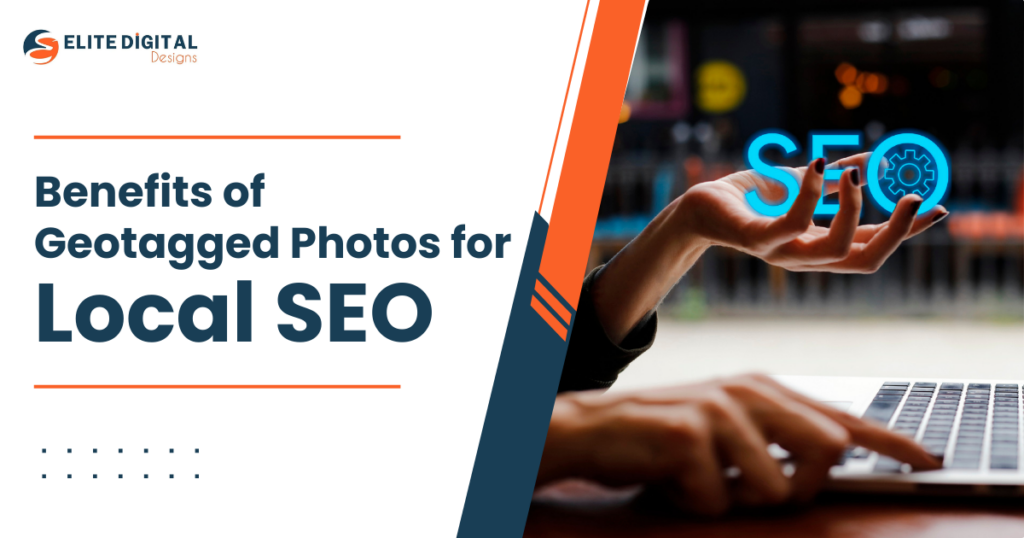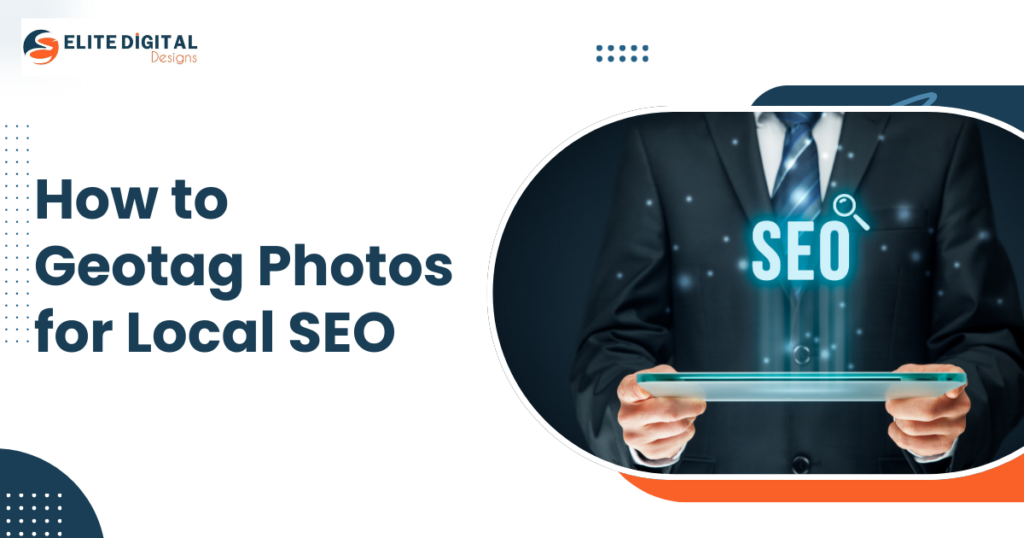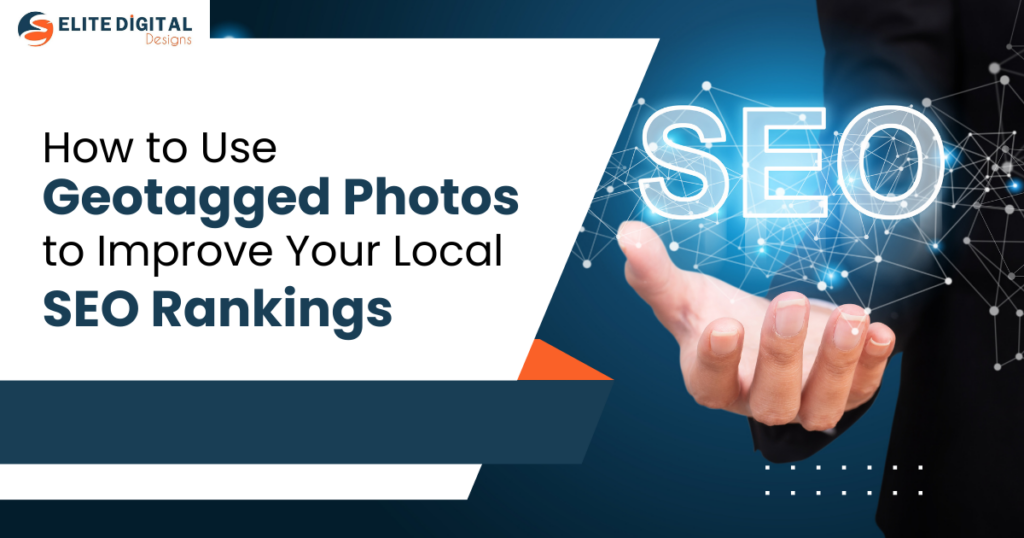Trying to top things with good websites and polished social media, and still, some businesses do not perform very well on local searches. With such poor location signals, search engines will not recognize your business as relevant to nearby customers. Just think, losing potential customers to your competitor’s better-optimized photos for Google Maps SEO. Services near your region are searched for daily by people, while your business potentially misses out on this valuable local traffic by not using geotagged images. By geotagging your photographs, GPS metadata is embedded to help search engines attach your photographs to your location. This is such a simple but quite powerful strategy to improve the visibility of the Google Business profile, local ranking, and customer engagement, giving you a competitive edge.
How GPS Data Is Embedded in Your Photos
Geotagging refers to the GPS incorporation of metadata in digital photos, which includes geo-coordinates, where the photo is taken, and time as parameters. The system should identify where the image was captured. Most smartphones and cameras do that automatically; for it, all the features should be kept activated.
How Search Engines Use Geotags
Search engines use geotagged photos, such as geotagging, to help find relevance by location. Businesses upload geotagged images to the business site or profile, which ends up tagging the image and the area. This improves location-based SEO; thus, the site becomes visible in local searches. That is, if a bakery is in Chicago and uploads globally focused tagged images, the site ranks higher when users could be searching for “best bakery near me.”
Benefits of Geotagged Photos in SEO
- Impressive Local Search Ranking – Ensure searches tied to the geographic region where businesses are located include all of them.
- Improve Google My Business Listings – Geotagged images deliver even greater relevance and add even more excitement to listings.
- Increase Social Media Engagement- Instagram and Facebook track content distribution based on geotags and recommend it to local audiences.
Geotagging Privacy Issues
Geotagged photos usually give benefits for SEO but can be a privacy risk, such as sharing pictures with coordinates to reveal exactly where someone lives, like a home address. Users should, therefore, check their devices’ settings to strip the geotags when necessary to keep privacy intact. By effectively using geotagged pictures, privacy awareness can be married to enhanced web visibility for businesses or individuals.
Benefits of Geotagged Photos for Local SEO

Five Ways Geotagged Photos Improve Local Search Rankings.
1. Enhanced Visibility on Google Maps
When geotagged images are added to GBP, it does improve Google Maps SEO by emphasizing the business location. When customers search for services around them, those businesses with geotagged images are more likely to appear as local map results. Credibility which otherwise helps customers in searching for more accurate location information gets built up.
2. Input to Increase Local Citation Signals
Citations local- mentions of a business’s Name, Address, and Phone Number (NAP)- are indeed critical in any local SEO. Companies further develop their local citation signals and, therefore, local SEO while uploading photos in directories and listing them themselves under the business. Thereby securing greater trust and consistency in the search.
3. More Social Media Engagement
Social media sites like Instagram, Facebook, and X would favor content that is location-tagged. This way, businesses can create more exposure from such platforms since searches for businesses nearest to a particular area will crank up impressions on their submissions that include geotags, boosting engagement, foot traffic, and awareness of a brand.
4. Better Ranking in Image Searches
Geotagged images that are properly optimized have a better chance of being ranked in Google Images according to location search. Suppose a prospective customer searches for “best coffee house in Austin,” and one of the geotagged photos is associated. In that case, it increases the likelihood that the individual will visit the site and convert.
5. Fortified Local Backlinks
When businesses are mentioned by local blogs, news sites, and directories, they may include a geotagged photo with it. Such backlinks signal to the search engines about the relevance of a specific business in a particular geographical location, thus improving its Google Maps SEO and overall local search ranking.
- Strategically using geotagged images will help businesses improve their local SEO practices, earn more visibility, and attract more customers who are searching within their geographic area.
How to Geotag Photos for Local SEO

A Step-By-Step Guide to Geotagging Your Photos
Step 1: Activate GPS Features on Your Camera/Smartphone
Enable GPS location services on your device to geotag photos automatically:
- iOS: Go to Settings > Privacy & Security > Location Services, then enable it for the Camera app.
- Android: Open Settings > Location, then turn on GPS and allow Camera access.
- DSLR Cameras: Some have built-in GPS. For some, external GPS modules are required.
Step 2: Use Geotagging Tools
For photos that do not have any location data, you can manually add in data using geotagging tools.
- GeoImgr: Let one upload and put latitude and longitude before the upload of photos.
- Ahead file with Adobe Lightroom: allows photo tagging using GPS metadata for SEO.
- Google Maps: Finds accurate geo-coordinates needed to geotag the image.
Step 3: Confirm Field Data to be Accurate
Make sure that your geo-coordinates correspond with your business address before uploading. This could affect your local SEO and mislead search engines because the areas would be mismatched. You can do that by checking image metadata in the file properties or through Google Photos.
Step 4:Optimize Filenames and Alt Text
To maximize SEO benefits rename files with location-related keywords
- Example: best-coffee-shop-new-york.jpg instead of IMG1234.jpg.
- Use descriptive alt text, such as “Best coffee shop in New York serving organic coffee.”
Following these steps boosts the local SEO ranking and visibility in Google Images, enabling more nearby customers to search for their services to see them.
Uploading Geotagged Photos to Key Sites
Sharing Geotagged Photos to Maximize SEO Benefits
Google Business Profile (GBP)
Uploading geotagged photos to Google Business Profile (GBP) carries weight for improving GBP optimization and ranking on Google Maps. Photos with real GPS metadata give Google the signals that your business is active and would be showing up for important local searches. Ensure the images are representative of your actual business location for maximum credibility and visibility in the actual search results.
Social Media Platforms
Instagram, Facebook, and Pinterest thrive on location-based content. Following these tips will provide even more SEO clouts:
- Location tags should be added to every photo.
- Relevant hashtags (like #BestCafeSeattle) should be included to better illicit discoverability.
- Publish high-quality geotagged images that aim to cultivate local engagement and organic reach.
Review Local Directories and Websites
Yelp, TripAdvisor, or industry-specific directories all allow businesses to upload images. Geotagged pictures will only add to the relevance of local directories and aid businesses in being discovered in searches for nearby services.
| Pro Tip: Ask your customers to also upload geotagged photos to further boost your presence. |
Website
Geotagged pictures should be added to location-specific web pages, blogs, and service pages, thus allowing for on-site SEO use. When uploading images, be sure to:
Rename with an optimized file name (such as best-rooftop-restaurant-chicago.jpg).
Include alt text that is relevant and descriptive with local keywords.
Compress images for speed.
Thus, by sharing geotagged pictures on these platforms, businesses can boost local rankings, increase engagement, and generate more organic traffic.
Maximize User-Generated Geotagged Content
Encouraging Customers to Post Geotagged Photos
Providing momentum for the geotag photo-sharing activities of customers is a potent means of enhancing local SEO and increasing brand exposure. Climbing up the idea of user-generated content strengthens search engine credibility for your business while establishing a location relevance for your customers.
- Run Contests/Provide Incentives – Discounts, giveaways, or special promos for customer check-ins or geotagged posts.
- Repost User-Generated Content – With customer consent, share their photos on your Google Business Profile (GBP), website, and social media for trust-building and engagement.
- Employ Branded Hashtags with Place Names – Encourage users to attach hashtags to their pictures, like #NYCBakeryLove or #BestPizzaChicago, to make user-generated content more relevant to local SEO.
Thus, through geotagged user-generated content, businesses can increase local search rankings, attract more customers nearby, and develop an engaged online community.
Make Local Keyword Optimization for Geotagged Photos
Advanced Tips for SEO-Friendly Geotagged Images
Optimizing geotagged photos for local keywords will give businesses a better opportunity to generate local search results. Here’s how you might work at enhancing the visibility of your image:
- Include Location-Relevant Captions: Caption images such as ‘Serving Fresh Pizza in Downtown Chicago,’ as it reiterates relevance to local searches.
- Compress Images Faster: Free tools such as TinyPNG or Squoosh can help you keep quality high while drastically reducing file size. Fast-loading pages boost SEO rankings as well as the user experience.
- Implement Local schema Markup: Add GeoCoordinates schema to images, which helps the search engines understand where the images are from. This implies giving you a shot in the arm with Google Images as well as Local Search.
By placing great emphasis on optimizing geotagged photographs for local keywords, businesses can take their local SEO one step closer to success, increase their rank on the respective websites, and attract many more potential clients who are engaging in searches for venues in their area.
Tracking and Measuring Results
How Geotagged Photos Affect Local SEO
For any measure of local SEO success, businesses ought to monitor how geotagged photos are impacting visibility and engagement in searches. Here are some ways for you to check performance:
- Google Analytics – Check for traffic coming to the website from Google Image Search, i.e., how the geotagged photos work to visit the website.
- Google Search Console – Check the impressions and clicks on the snippets with images, thus ensuring that your images are being shown on relevant local searches.
- GBP(Google Business Profile) Insights: It shows how many users have viewed and interacted with your uploaded photos within the GBP. So, an increase in interaction with the photos should reveal a stronger presence within Local Search.
This software evaluation, after consistent monitoring of these parameters, allows the business to further streamline its geotag strategy and ensure that it is working for local SEO.
Common Mistakes to Avoid
Avoiding Pitfalls While Attaining Local SEO through Geotagged Photos
While geotagging images can be a useful and highly valued method for improving local SEO, errors made in the course of the process may only serve to further detract from its worth. The following are crucial mistakes to avoid:
- Uploading Images With Wrong or Mismatched Coordinates – A check of GPS metadata must observe the business location; the wrong coordinates Privacy bends into a search engine’s thoughts and ruins the Google Maps SEO rankings.
- Not Following Optimization Techniques on Images – Large image files slow down websites, harming user experience and rank. Instead, compressed images that use relevant local keywords to describe them should be given a name (e.g., IMG_1234.jpg → best-coffee-shop-dallas.jpg).
- Disregarding Privacy- These could be images that are geotagged in sensitive locations, like private property or areas where customers are present; dignity must be maintained, thus protecting privacy.
Steering clear of these blunders will earn businesses the best of geotagged photographs to improve local search rankings and thrive online with a trustworthy image.
FAQs
How do geotagged photos provide Google with cues for local search algorithm functions as opposed to traditional on-page SEO practices?
Geotagged photos provide the internet search engine Google a cue of a definite location, thereby strengthening the physical presence of a business in local searches. In contrast to traditional on-page SEO, which depends on text-placed location mentions, geotags boost the visibility of Google Maps SEO and image search. The two of them combined create a marking impact for local rankings.
What are the possible privacy and security risks of geotagging, and how can businesses find a balance between optimizing their websites and keeping user safety in mind?
Geotagging can reveal sensitive location information that can leave a particular business susceptible to privacy intrusions or unwanted tracking. To mitigate these risks, businesses should avoid the geotagging of private locations, should verify the metadata of anything being uploaded, and should train staff on good geotagging practices.
With the advancement of AI image recognition, what altered search engines will use geotagged images for ranking and local intent detection?
With AI analyzing both visual content and geotags, image-led local searches will become much more precise. It is conceivable that search engines will start to favor user-generated geotagged content that verifies business locations with real-world image evidence over metadata alone. This would mark a fundamental shift in local SEO practices.
Could overuse or manipulation of geotagged photos be considered by search engines, leading to negative responses?
In situations where companies spam or fabricate their location tags, Google will discount that content in a manner much like it does for keyword stuffing. Search engines prize factual location data, so the spamming or maintenance of misleading geotagging might decry the worth of that information and reduce the engagement and rankings on local searches over time.
Start Using Geotagged Photos to Dominate Local Search
Geotagged photos are highly potent in boosting local SEO, creating visibility on Google Maps, and promoting engagement. By appending GPS-related metadata, a business makes the imaging relevant to local searches. Optimizing filenames, applying image schema markup, and compressing files are strategies that enhance the chances of good ranking in the search results. By checking with Google Analytics, Search Console, and GBP insights, the result can be tracked and the strategies fine-tuned. Avoiding common pitfalls such as wrong coordinates, oversized files, and privacy infringements makes for smooth execution. So conducting an audit of your present images, geotagging where necessary, and optimizing for the greatest local search effects is where you should begin.
Visit Elite Digital Designs to learn how our experts can optimize your local SEO strategy with geotagged photos!


